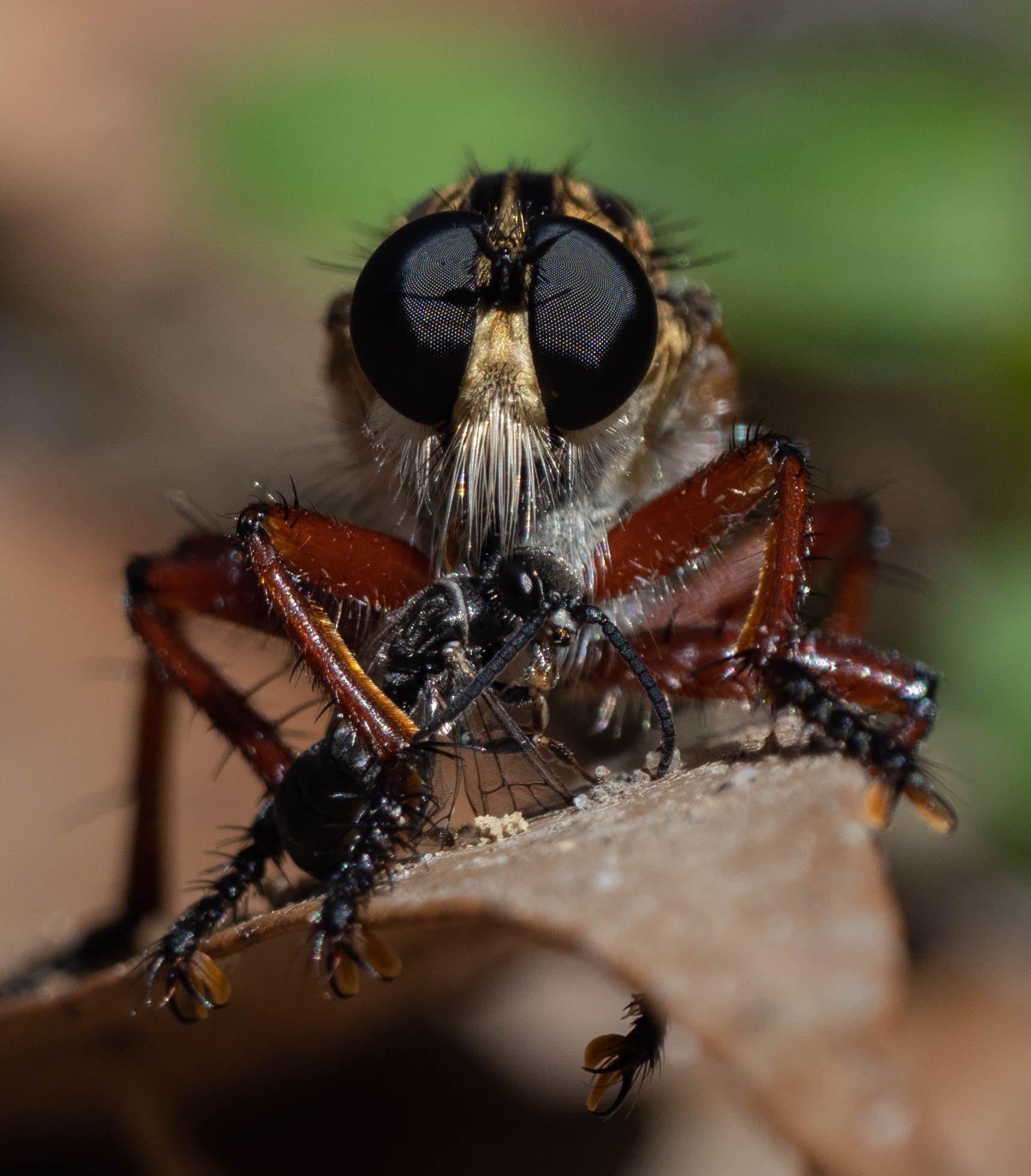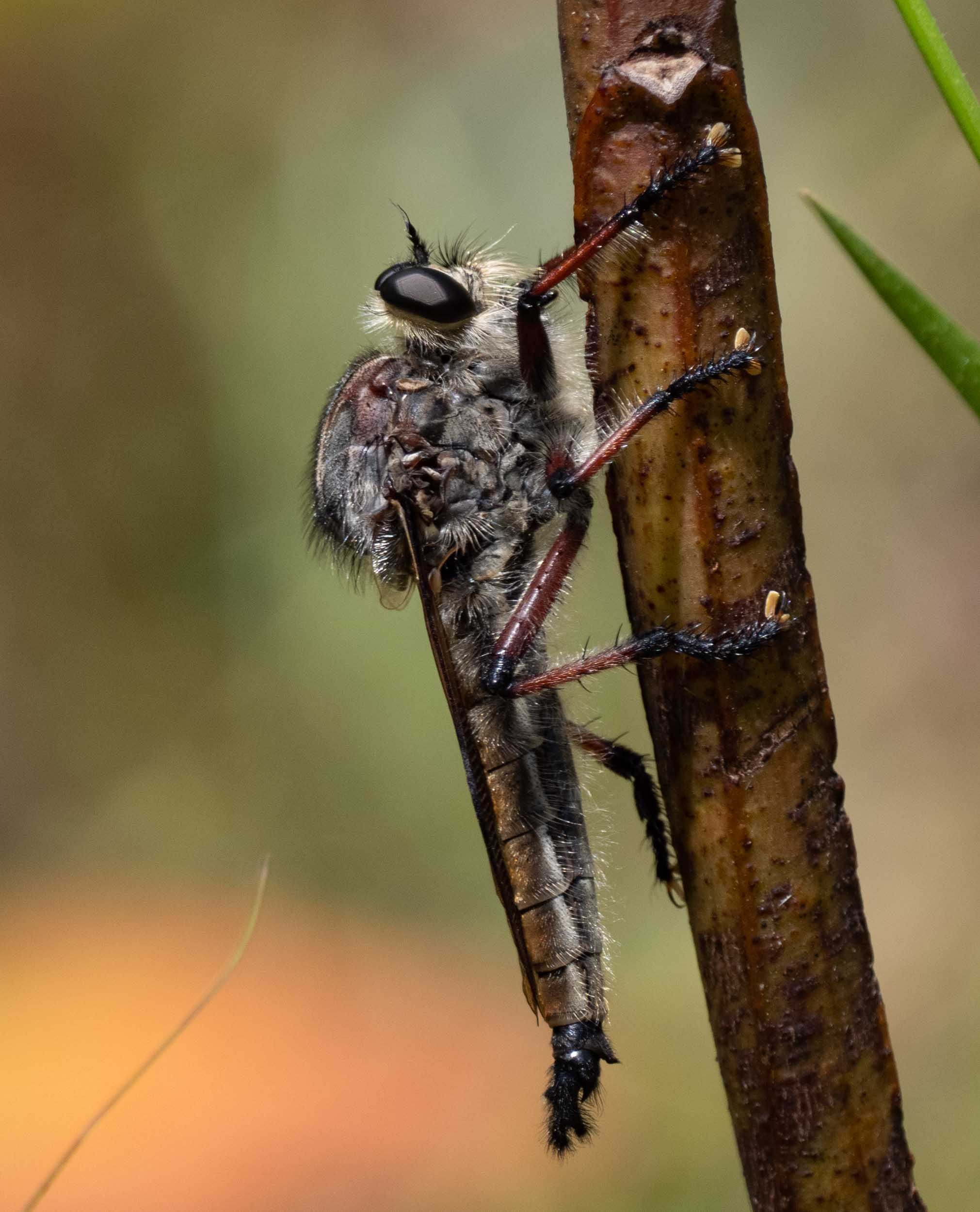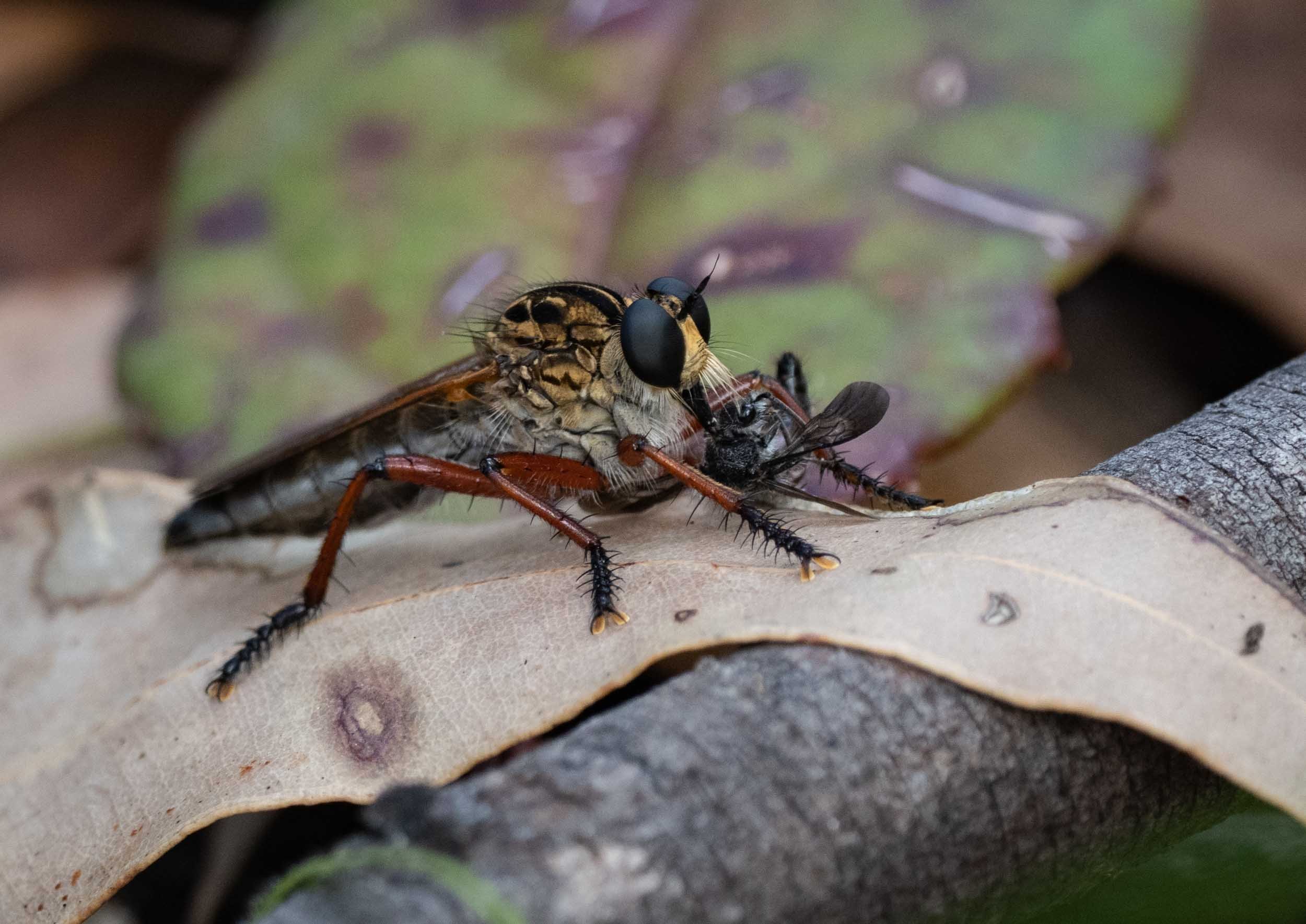
robber fly with flower wasp
Robber flies are accomplished aerial hunters, often taking well-defended prey. The fly has strategically impaled this flower wasp through the neck. Within seconds the prey had stopped moving completely.
Zosteria

robber fly
Asilidae is one of the largest fly families. Australia has nearly 400 species of robber flies across 68 genera, most of them endemic.
Neoaratus hercules

robber fly with velvet ant
I had been watching sand-nesting wasps and the associated patrols by velvet ants (Mutillidae), when this robber fly landed nearby. It appears to have nabbed one of the male velvet ants. That’s impressive, as mutillids are fast flyers.
[at least, I think it’s a mutillid … some flower wasps look quite similar]

robber fly with a large meal
Robber flies are among the most commonly photographed insects. They sit motionless, in the sun, often with impaled prey. It takes a while to liquify and ingest the contents of the hapless victim. The saliva of the robber fly contains nerve toxins (to immobilise) and enzymes (to break down proteins).

yet another species of robber fly
Medium in size, yet willing to take tiny prey.
Cerdistus





